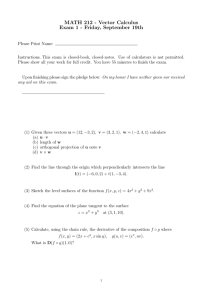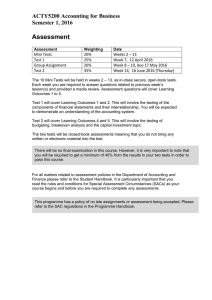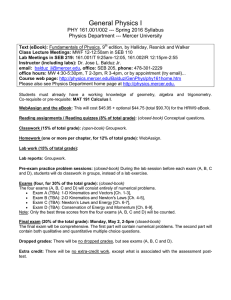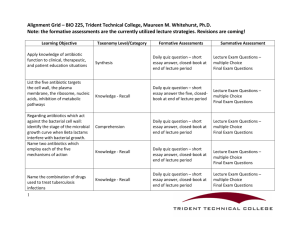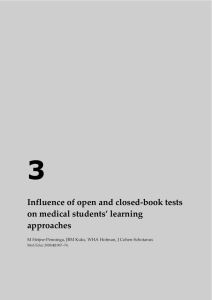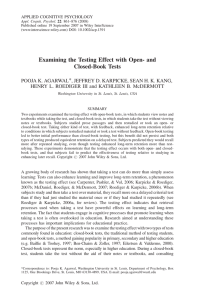16.901: Homework # 1 Due Date: February 12, 2pm Instructions
advertisement
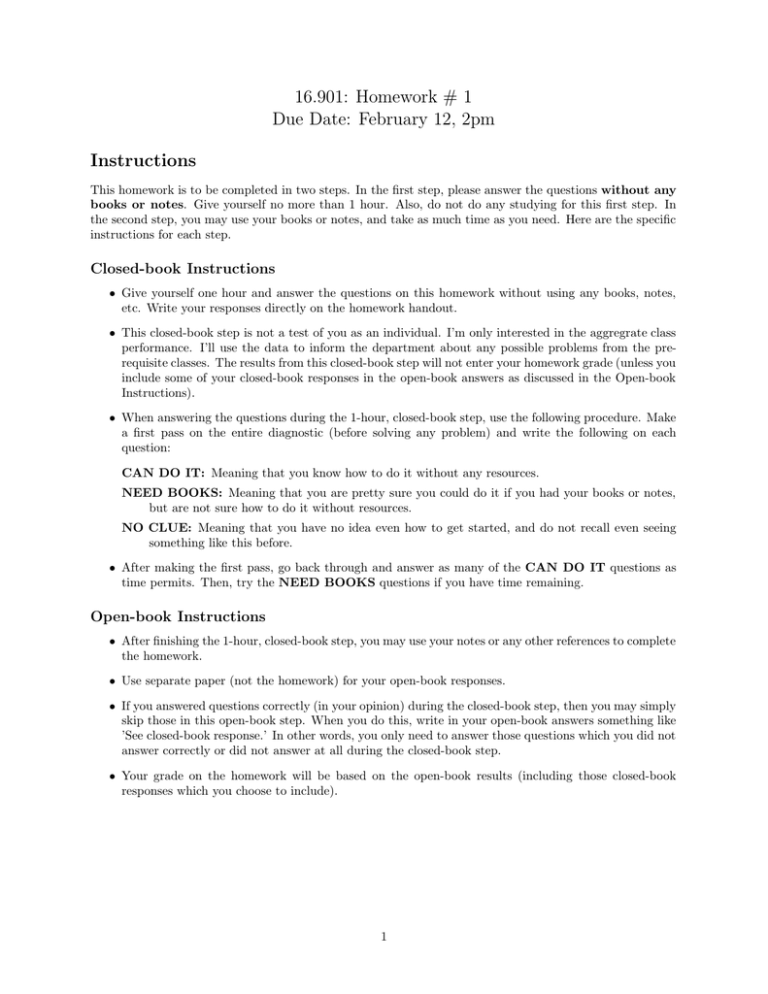
16.901: Homework # 1 Due Date: February 12, 2pm Instructions This homework is to be completed in two steps. In the first step, please answer the questions without any books or notes. Give yourself no more than 1 hour. Also, do not do any studying for this first step. In the second step, you may use your books or notes, and take as much time as you need. Here are the specific instructions for each step. Closed-book Instructions • Give yourself one hour and answer the questions on this homework without using any books, notes, etc. Write your responses directly on the homework handout. • This closed-book step is not a test of you as an individual. I’m only interested in the aggregrate class performance. I’ll use the data to inform the department about any possible problems from the prerequisite classes. The results from this closed-book step will not enter your homework grade (unless you include some of your closed-book responses in the open-book answers as discussed in the Open-book Instructions). • When answering the questions during the 1-hour, closed-book step, use the following procedure. Make a first pass on the entire diagnostic (before solving any problem) and write the following on each question: CAN DO IT: Meaning that you know how to do it without any resources. NEED BOOKS: Meaning that you are pretty sure you could do it if you had your books or notes, but are not sure how to do it without resources. NO CLUE: Meaning that you have no idea even how to get started, and do not recall even seeing something like this before. • After making the first pass, go back through and answer as many of the CAN DO IT questions as time permits. Then, try the NEED BOOKS questions if you have time remaining. Open-book Instructions • After finishing the 1-hour, closed-book step, you may use your notes or any other references to complete the homework. • Use separate paper (not the homework) for your open-book responses. • If you answered questions correctly (in your opinion) during the closed-book step, then you may simply skip those in this open-book step. When you do this, write in your open-book answers something like ’See closed-book response.’ In other words, you only need to answer those questions which you did not answer correctly or did not answer at all during the closed-book step. • Your grade on the homework will be based on the open-book results (including those closed-book responses which you choose to include). 1 The Questions 1. Given f (x) = cos x + cos x2 , calculate the first 3 terms of the Taylor series expansion of f (x) about x = 0, i.e. find the constants c0 , c1 , and c2 where f (x) ≈ c0 + c1 x + c2 x2 + higher order terms. 2. Re-write the following coupled, second order nonlinear ODE’s, ẍ + ẋẏ 2 + x = t2 , ÿ + ẏ + ẋ + xy = 0, as a set of coupled first order ODE’s of the form, f1 (z1 , z2 , z3 , z4 , t) z˙1 z˙2 f2 (z1 , z2 , z3 , z4 , t) z˙3 = f3 (z1 , z2 , z3 , z4 , t) z˙4 f4 (z1 , z2 , z3 , z4 , t) 2 3. Show that if u(a) = u(b) = 0, then the following is true: � a b u d2 v dx = − dx2 � a b du dv dx, dx dx Hint: use integration by parts. 4. The function f (x) is known to have a its minimum value at the point x = x ∗ . What are the conditions on the first and second derivatives of f (x) at x = x ∗ . 3 5. Let x be a random variable with mean µ x and standard deviation σx . Find the mean, µf , and standard deviation, σf , of the function f (x) = a + bx where a and b are constants. 6. Consider the following system of linear ODE’s, � � � � � � z˙1 z1 −1 20 =A , where A = z2 −5 −1 z˙2 with the initial conditions z1 (0) = 1 and z2 (0) = 100. (a) Find the eigenvalues of A. 4 (b) Do the magnitudes of the states (i.e. z1 and z2 ) grow or decay as t → ∞? (c) Do the states oscillate? If so, with what time period? 7. For the previous system of equations, determine the analytic solution for z 1 (t) and z2 (t) with the given initial conditions. 5
